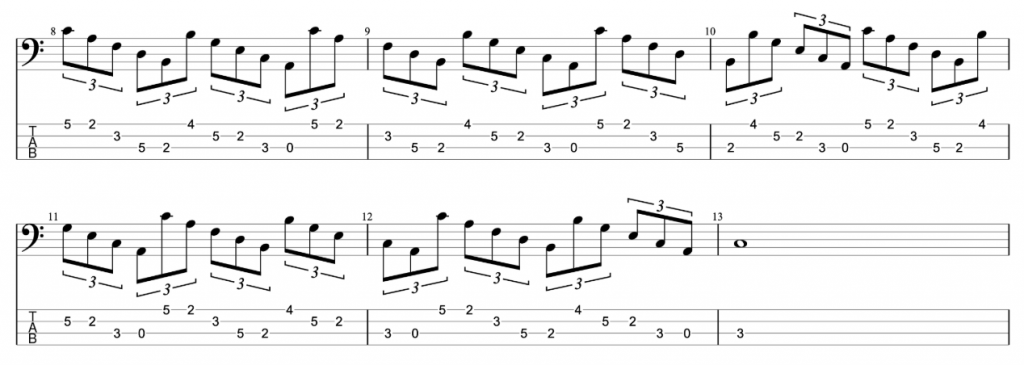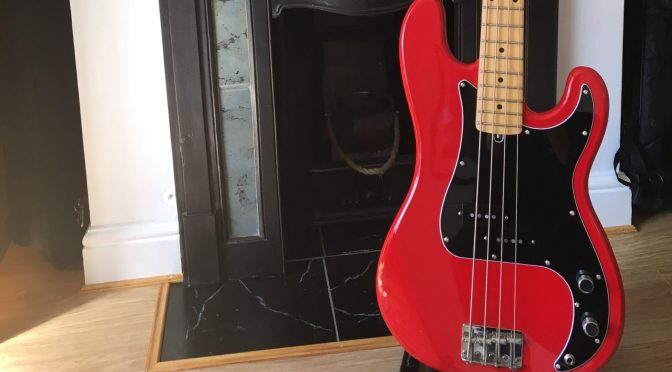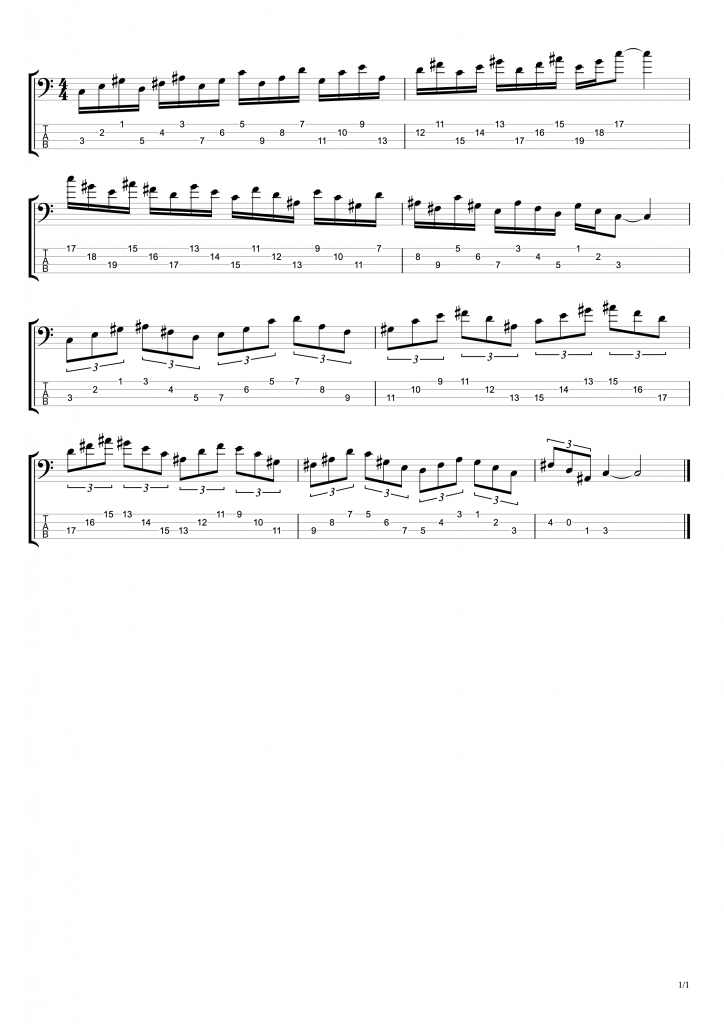Triplet Timing Exercises for Bass Guitar – Bass Practice Diary – 1st September 2020
This is my third video of timing exercises for bass guitar. The previous two videos both involved playing odd number note groupings as 16th notes in 4/4. In this video, I’m changing the subdivision and I’m playing four and five note groupings as triplets in 4/4. All of these triplet timing exercises are written with 8th note triplets. However, if you want to take the exercises a step further, you can make them harder by using quarter note triplets or 16th note triplets.
The Exercises
The first exercise involves playing four note groupings. I’m using two arpeggios in the key of C major, a Dm7 arpeggio and a Cmaj7 arpeggio. You can use any four note grouping to do this. Four note groupings played as continuous triplets in 4/4 will arrive back on beat one after two bars. So, I’ve put the note C on beat one of bar three to complete the exercise. You can loop the exercise as many times as you want to.

Another way to play four note groupings would be to play a scale, four notes at a time. This is a C major scale played descending from G, the fifth.

Playing five note groupings as triplets is harder. The next exercise lands back on beat one at the beginning of bar 6.

Finally, this last exercise combines the four and five note groupings. It’s actually a bit more straight forward than playing just the five note groupings, because four and five makes nine. So, this is effectively a grouping of nine. And because nine is divisible by three, it fits into triplet rhythms quite nicely.
















